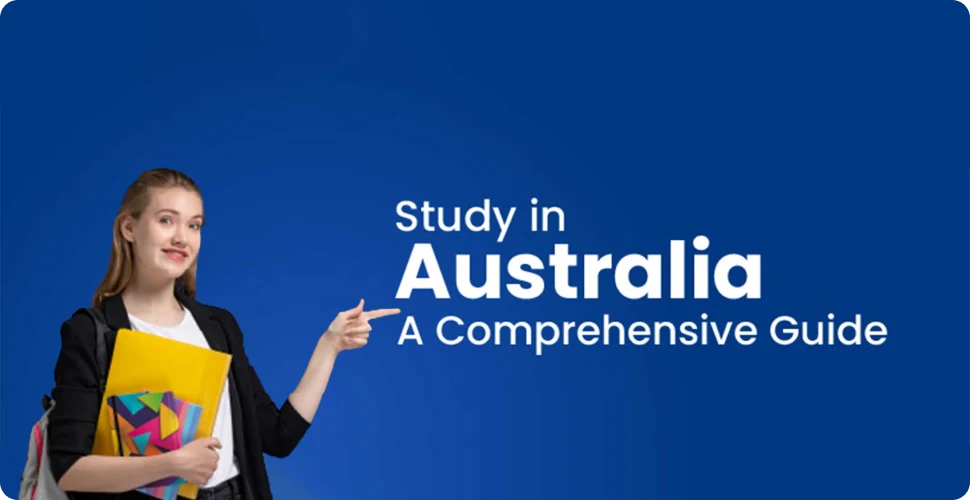Introduction
Australia has become one of the most popular destinations for international students, offering world-class universities, diverse study programs, a vibrant multicultural environment, and clear pathways to permanent residency. With over 700,000 international students enrolled annually, Australia continues to rank among the top global education hubs alongside the USA, UK, and Canada.
If you’re planning to study in Australia for international students in 2025, this guide will help you understand the entire process—covering admission requirements, student visa details, costs, scholarships, top universities, and post-study opportunities.
Why Choose Australia for Higher Education?
International students prefer Australia for several reasons:
- Globally Recognized Universities – Institutions like the University of Melbourne, ANU, and University of Sydney rank among the world’s best.
- Diverse Courses – From STEM to business, hospitality, and healthcare, Australia offers a wide range of programs.
- Work While Studying – Students can work up to 48 hours per fortnight (during semesters) and full-time during breaks.
- Multicultural Environment – Over 200 nationalities live in Australia, ensuring inclusivity.
- Post-Study Work Opportunities – Subclass 485 (Temporary Graduate Visa) offers up to 4 years of work rights, depending on qualifications and location.
One of the biggest reasons students choose to study in Australia for international students is the combination of academic excellence and career-focused opportunities.
Top Universities in Australia
Here are some of the leading universities attracting international students:
- University of Melbourne – Known for research and innovation.
- Australian National University (ANU) – Highly ranked for politics, law, and international relations.
- University of Sydney – Offers strong programs in medicine, engineering, and arts.
- University of Queensland (UQ) – Renowned for environmental science and biosciences.
- Monash University – A leader in pharmacy, nursing, and public health.
- University of New South Wales (UNSW) – Top choice for business, finance, and engineering.
These institutions consistently feature among the best choices to study in Australia for international students across various disciplines.
Popular Courses to Study in Australia
Australia is well-regarded for career-focused programs. Some of the most in-demand fields include:
- Information Technology & Data Science
- Engineering & Construction
- Healthcare & Nursing
- Business & Management
- Hospitality & Tourism
- Education & Teaching
- Environmental Science
- Creative Arts & Design
Many of these programs also lead to PR pathways, making them highly attractive to international students.
Admission Requirements
To gain admission into an Australian university, students generally need to meet the following criteria:
- Academic Qualifications
- Undergraduate: Completion of 12 years of schooling or equivalent.
- Postgraduate: A recognized bachelor’s degree.
- Undergraduate: Completion of 12 years of schooling or equivalent.
- English Language Proficiency
- IELTS: 6.0–6.5 (overall score depending on the course).
- TOEFL or PTE Academic also accepted.
- IELTS: 6.0–6.5 (overall score depending on the course).
- Supporting Documents
- Academic transcripts
- Statement of Purpose (SOP)
- Letters of Recommendation (LORs) for postgraduate courses
- Resume (if applicable)
- Academic transcripts
- Application Deadlines
- February Intake (main): Applications usually close in October–November.
- July Intake (mid-year): Deadlines are generally in April–May.
- February Intake (main): Applications usually close in October–November.
The admission process to study in Australia for international students is straightforward if you meet academic and English proficiency standards.
Student Visa Process (Subclass 500)
To study in Australia, you need to apply for the Subclass 500 Student Visa.
Key Requirements:
- Confirmation of Enrolment (CoE) from a registered institution.
- Genuine Temporary Entrant (GTE) Statement – Proof you intend to study, not migrate permanently at this stage.
- Financial Proof – Enough funds to cover tuition fees, living costs (approx. AUD 24,505 per year), and travel.
- English Language Test Results (if required).
- Overseas Student Health Cover (OSHC) – Mandatory for the duration of stay.
Cost:
- Visa application fee: AUD 710 (approx.)
Processing Time:
- Around 1–3 months, depending on your country of application.
Cost of Studying in Australia
Studying in Australia can be a significant investment. Here’s a breakdown:
- Tuition Fees:
- Undergraduate: AUD 20,000 – 45,000 per year
- Postgraduate: AUD 22,000 – 50,000 per year
- Doctoral Programs: AUD 18,000 – 42,000 per year
- Undergraduate: AUD 20,000 – 45,000 per year
- Living Costs:
- Average: AUD 21,000 – 27,000 per year
- Includes accommodation, food, travel, and personal expenses
- Average: AUD 21,000 – 27,000 per year
- Health Insurance (OSHC):
- Around AUD 500 – 700 annually
- Around AUD 500 – 700 annually
While the costs may seem high, many financial aid options and scholarships make it more affordable to study in Australia for international students.
Scholarships for International Students
Several scholarships help reduce the financial burden of studying in Australia:
- Australia Awards Scholarships – Fully funded opportunities for students from eligible countries.
- Destination Australia Scholarships – Support for students studying in regional areas.
- University-Specific Scholarships – Such as Melbourne International Undergraduate Scholarship, ANU Global Diversity Scholarship, and UNSW International Scholarships.
Tip: Applying early increases your chances of securing financial aid.
Work While Studying
International students can:
- Work 48 hours per fortnight during study periods.
- Work full-time during semester breaks.
- Earn AUD 22–25 per hour on average in part-time jobs.
Popular part-time job sectors include hospitality, retail, administration, and tutoring.
Post-Study Work Opportunities
Australia provides excellent post-study options:
- Temporary Graduate Visa (Subclass 485):
- 2–4 years of work rights depending on your qualification.
- Graduates from regional universities may get an extra 1–2 years.
- 2–4 years of work rights depending on your qualification.
- Permanent Residency Pathways:
- Skilled Migration Programs (Subclass 189, 190).
- Employer-Sponsored Visas.
- Skilled Migration Programs (Subclass 189, 190).
This makes Australia a great choice for students aiming to build careers and settle long-term.
Life in Australia for International Students
Australia is known for its high quality of life, safety, and student-friendly cities. Some top destinations include:
- Melbourne – Cultural capital, top-ranked for student experience.
- Sydney – Bustling city life with world-class universities.
- Brisbane – Affordable living with excellent weather.
- Adelaide – Budget-friendly and known for hospitality.
- Perth – Growing economy and regional benefits for PR.
Conclusion
Choosing to study in Australia for international students is not just about earning a degree—it’s about gaining global exposure, building a career, and experiencing a diverse lifestyle. From top-ranked universities to post-study work rights, Australia offers international students a complete package of education and opportunities.




